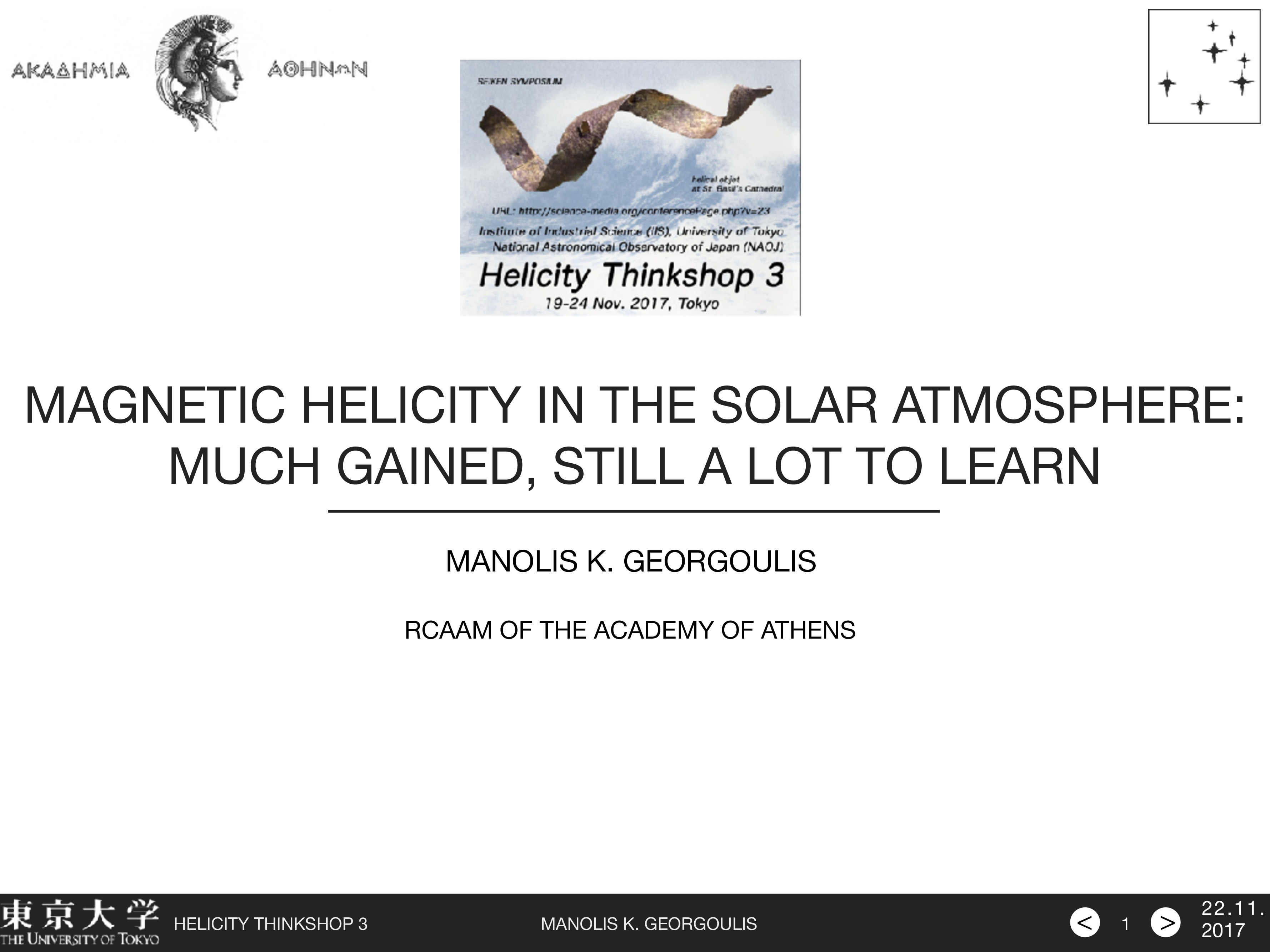Affiliation
RCAAM of the Academy of Athens
Main category
Natural Sciences (Astrophysics and Astrononmy)
Abstract
The 1980s and 1990s saw seminal works on the role of magnetic helicity in the magnetized solar atmosphere. Thanks to helicity, our understanding of the quiescent and eruptive solar magnetism has progressed substantially since then. From the plausible necessity of coronal mass ejections (CMEs) as sinks of excess solar magnetic helicity in the heliosphere to the solar cycle-independent hemispheric helicity preference, likely imposed by the steady solar differential rotation, to the actual estimates of active-region, quiet Sun, and CME helicities, we have come to place magnetic helicity on equal footing with the electric-current-induced (i.e., non-potential) magnetic energy that fundamentally fuels solar instabilities and eruptions. In spite of this tremendous progress, however, there is still is a lot to learn: first, we need to optimize the way magnetic helicity is practically calculated in local and global solar scales. Then, we need to determine the interplay between different helicity terms that seem to hold distinct aspects of the physics of the system. Furthermore, the role of spectral helicity characteristics, as well as the competition between opposite senses of helicity in a single magnetic structure and its role to eruptions, need to be further clarified. We attempt a resume of what we know, what we are hinted about, and what we should aim to achieve in hopes of spurring a discussion between involved researchers that could further advance the state of the art in the field. This account will be attempted in a plain, physical language to hopefully enable cross-fertilization between different physical domains where helicity is deemed to play a role.
Further reading
DOIs: 10.1086/521417 ; 10.1088/0004-637X/759/1/1 ; 10.1007/s11214-016-0299-3 ; 10.1088/2041-8205/759/1/L4 ; 10.1051/0004-6361/201424864 ; 10.1051/0004-6361/201630043 ; 10.1088/2041-8205/784/2/L45 ; 10.3847/0004-637X/819/2/146
DOI
10.18147/smn.2017/presentation:288
Do you have problems viewing the pdf-file? Download presentation
here
If the presentation contains inappropriate content, please
report the presentation. You will be redirected to the landing page.
